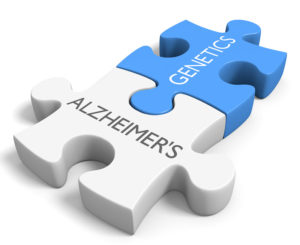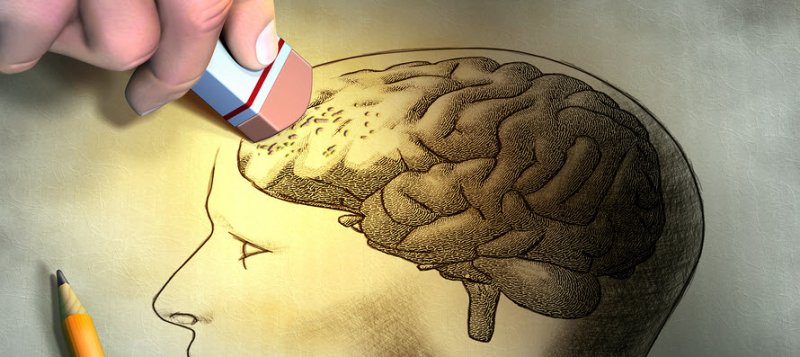Table of Contents
Key Takeaways
- Various cognitive enhancers such as Alpha GPC, CDP-Choline, and Coenzyme Q10 (CoQ10) are beneficial for the aging brain.
- Essential vitamins and minerals like Vitamin B12, Vitamin D, and Magnesium support brain health.
- Natural nootropics including Ashwagandha, Bacopa Monnieri, and Ginkgo Biloba can aid in maintaining cognitive function.
- Substances like CBD Oil and Turmeric provide additional benefits for brain health.
- Exploring a combination of these nootropics, under professional guidance, could lead to a personalized regimen for promoting brain health in aging individuals.
Many of us know people who’ve lived past 90. And enjoyed a well-functioning brain until the very end. So we know it’s possible to maintain a fully optimized brain throughout life.
Most of us also know someone who’s quality of life has declined with Alzheimer’s, Parkinson’s or dementia. Neurodegenerative disease affects not just one person. Close family and friends are impacted as well.
But memory loss is NOT a normal part of aging.
Recent research in aging and brain function have found that as we get older individual brain molecules, cells, cerebral circulation, and even the physical shape of your brain are affected in some way.
Some of these changes begin right around your 21st birthday. So if you’re a ‘young’ neurohacker, this post is for you as much as it is for the aging Baby Boomer or senior citizen.
And a study recently published in 2024 showed that the human body ages in “bursts”. With rapid changes occurring at around 44 and then another ‘burst’ around 60 years old.
We also know that your brain responds to the same types of insults we throw at it as the rest of your body. Attacks by stress, nutritional deficiencies, poor diet, toxins, not enough exercise or sleep all affect cognitive performance.
But the human brain has an amazing ability to repair and maintain itself even into old age. All we have to do is give it what it needs to survive and thrive. And worries about dementia or memory loss go away.
In this post we’ll take a look at what can go wrong as your brain ages. And we’ll identify the nootropic supplements that can correct those problems. Before they cause any lasting damage. Our goal is to maintain full, or even optimized cognitive abilities until the very end.
The Dementia Epidemic
Much of the problem with the rise in dementia and many other neurodegenerative diseases comes from the way age-related cognitive decline is dealt with by modern medicine.
If you’re dealing with memory loss or other mental performance issues, simply putting a label on it is not helpful. Naming the problem does nothing to help you identify and treat the underlying causes of the disease.
But we do know that environmental toxins, exercise, deficiencies in hormones, inflammation, lack of vitamins and omega-3 fats, and stress all affect brain function.
So the best place to start dealing with a problem like cognitive decline is to get to the bottom of what’s causing it.
Simple genetic testing can tell you if you carry a gene that puts you at a higher risk for developing Alzheimer’s.[i] You can also find out if your brain and body have a harder time detoxing from heavy metals. Or a gene variant is making it difficult for you to lower your cholesterol.[ii]
If you have low thyroid function or sex hormones, heavy metal toxicity, inflammation or deficiencies in certain vitamins, minerals, antioxidants or fatty acids – you will experience a decline in cognitive functions.
And if left unchecked could develop into dementia, Alzheimer’s or some other neurodegenerative disease.
For most people, changes in your diet and the right nootropic supplement stack can make a profound difference in cognition and memory. Stacking the odds in your favor so you can avoid cognitive dysfunction altogether.
Mental decline occurs over time. Sometimes quickly, and sometimes over many years. But it never gets better. Unless you do something about it.
So if you’re dealing with memory loss, it’s up to you to do whatever you need to and determine what imbalances are present in your brain and body. And then use the list of nootropics below to figure out how to fix them.
No single treatment or nootropic stack works for everyone. Because everyone is different. So each issue investigated here offers several different options for you to try.
Choose one or two from each category and see how they work for you. A little trial and error on your part could mean a sound mind and great memory well into old age.
Free radicals and Cognitive Decline
Extensive research has shown that oxidation of DNA, proteins and lipids by free radicals are responsible for functional decline in your brain.[iii]
It’s estimated that 10,000 oxidative interactions between DNA and free radicals in each of your brain cells occur every day. And as you get older, at least 1 of every 3 proteins per cell is dysfunctional because of oxidative damage.
Free radical and oxidative damage to the brain is by no means the only cause of cognition problems. But the role of free radicals in cognitive dysfunction is a major issue. And one that can be effectively controlled with daily use of nootropic supplements.
Looking for the best nootropics to support cognitive function and prevent mental decline? Here’s a list of nootropics that can defend against oxidative damage and free radicals. Choose one or two for your nootropic stack.
-
Alpha Lipoic Acid (ALA) is a Must
Alpha Lipoic Acid (ALA) – This naturally-occurring, sulfur-containing fatty acid is unique among other antioxidants. Because it is both water- and fat-soluble.
Alpha Lipoic Acid has the unique ability to neutralize free radicals in all cell environments. This potent antioxidant can even reduce brain damage after a stroke.[iv] Alpha Lipoic Acid boosts the synthesis of acetylcholine and increases glucose uptake in brain cells.
ALA regenerates other depleted antioxidants (Vitamins C & E, glutathione), and recycles CoQ10. Reducing inflammation, and getting rid of heavy metals. Boosting cellular energy and memory.
Alpha Lipoic Acid should be part of every nootropic stack. Recommended dosage is 50 – 600 mg per day depending on your neurohacking goals. See dosage notes in my full ALA review for more.
-
Coenzyme Q10 (CoQ10) Preserves Brain Health
Coenzyme Q10– CoQ10 is a natural antioxidant synthesized in every single cell in your body and brain. CoQ10 helps produce adenosine triphosphate (ATP). Your brain cells’ source of energy produced in mitochondria. It takes fat and other substances and converts them into usable energy.
Studies show that supplementing with CoQ10 protects against brain cell damage by raising energy levels. It preserves brain function, and helps fight mental illness and migraines.
You have two CoQ10 options for your nootropic stack – ubiquinone and ubiquinol. If you’re under 25 and in good health you can likely get the benefit of CoQ10 with the less expensive ubiquinone. Over 25 and you’re better off with Ubiquinol.
Recommended Coenzyme Q10 dosage for nootropic use is 200 – 400 mg per day.
You can get therapeutic doses of Alpha Lipoic Acid (as Bio-Enhanced® R-Lipoic Acid) and CoQ10 (as MicroActive® Q10) in Performance Lab® Energy.
-
Creatine Protects Neurons from Toxins
Creatine – This non-essential amino acid is synthesized in your liver. And used in your brain to recharge the Adenosine Triphosphate (ATP) that is produced in the mitochondria in your brain’s nerve cells.
ATP is directly involved in producing, packaging and secreting neurotransmitters. Helping boost intelligence, improve memory, facilitate faster thinking and improve mood.
Creatine fuels ATP which boosts cellular metabolism. Helping protect neurons from damage caused by toxins. Keeping cellular energy levels up also helps protect mitochondria against the assault of free radicals.
Recommended dosage for Creatine is 5 grams per day.
-
Ginkgo Biloba Increases Cerebral Circulation
Ginkgo Biloba – Ginkgo Biloba is one of the oldest species of trees on earth. And has been used in Chinese medicine for millennia. Ginkgo helps reduce oxidative stress by eliminating free radicals.
Ginkgo also increases nitric oxide levels which dilate blood vessels. Increasing cerebral circulation improves oxygen and glucose availability to neurons which improves memory, recall, cognition and learning.
A study with 31 stroke patients looked at the effects of supplementing with Ginkgo in stroke recovery. The patients were given 1,500 mg of Ginkgo per day. Researchers found the stroke patients using Ginkgo had lower oxidative stress, inflammation and better antioxidant levels. Along with a greater decrease in C-reactive protein and an increase in circulating antioxidants.[v]
Recommended nootropic dosage of Ginkgo Biloba extract is 120 – 240 mg per day.
-
N-Acetyl L-Cysteine (NAC) Protects Against Oxidative Stress
N-Acetyl L-Cysteine (NAC) – NAC is a derivative of the naturally occurring amino acid L-cysteine. And works by primarily helping restore your body’s natural antioxidant glutathione.
Glutathione is a potent antioxidant, anti-inflammatory and free radical scavenger. Supplementing with NAC modulates glutamate levels and dopamine release in your brain. And it helps restore dopamine receptors.
Adding NAC to your nootropic stack helps reduce irritability, anxiety and depression. And protects your brain from excess glutamate and oxidative stress. Recommended dosage of N-Acetyl L-Cysteine is 600 mg, 3-times per day.
-
Pine Bark Extract (Pycnogenol) Supports Cognitive Function
Pine Bark Extract (Pycnogenol®) – This extract of maritime pine bark offers several nootropic benefits to the aging brain. Pycnogenol prevents accumulation of oxidatively damaged proteins. And may reduce the risk of diseases like Parkinson’s, Alzheimer’s, and Huntington’s.
Pycnogenol helps increase cerebral blood flow by increasing nitric oxide which dilates blood vessels. It prevents decreases in dopamine and norepinephrine. And the glutathione (GSH) and GSH-disulphide reductase (GSSG-R) ratio. Neurotransmitter problems which contribute to hyperactivity in ADHD.
Studies show that Pycnogenol helps reduce DNA damage caused by oxidation. And it inhibits proinflammatory gene expression and glycation. Recommended dosage of Pine Bark Extract (Pycnogenol) is up to 300 mg per day.
Synapses and brain aging
Research over the last several years has shown that our brain has the remarkable ability to re-wire itself throughout life.
Every time we have a new thought, encode a new memory or learn a new skill, we are building a new neural network in our brain.
Integral to these neural networks are neurons connected through their dendrites and axons via synapses.
The numbers and size of synapses change during aging. During normal, healthy brain aging, the numbers of synapses remain the same in most brain regions. In regions where they decrease, the remaining synapses may increase in size to compensate.[vii]
On the other hand, there is a profound decrease in synapse numbers in brain regions involved in learning and memory in people with Alzheimer’s.[viii] Other brain regions lose synapses in Parkinson’s and Huntington’s disease.
A reduction in number of synapses could be the cause of brain shrinkage as we get older. Our brain loses about 5% of its weight per decade after age 40.[ix]
Studies have shown that this synapse loss in neurodegenerative disorders occurs early in the disease process. Long before brain cell death and symptoms occur.
Most of the signal transduction pathways that regulate the health and survival of your neurons take place in synapses.
Research shows that synapse signaling systems are particularly vulnerable to oxidative stress and decreases in energy. (Refer to the previous section on “Free radicals…” for nootropics to prevent oxidative stress).
But we also know that age-related decreases in neurotrophic factor promotes synapse degeneration and brain cell death.[x]
We can help prevent age-related problems with synapses by using nootropics that will promote the growth of new synapses (synaptogenesis).
And we can increase Brain-Derived Neurotrophic Factor (BDNF) that boosts synapse growth and repair.
For a list of nootropics to increase BDNF, see the article:
Best Nootropics for Synapse Health
Below are some nootropic supplements to consider for synapse health and growth. Select one or two for your nootropic stack.
-
Ashwagandha for Synapse Growth
Ashwagandha – This ancient remedy is one of the most powerful herbs in Ayurvedic healing. Ashwagandha helps regenerate axons and dendrites of neurons. And helps reconstruct synapses.[xi]
Recommended nootropic dosage of Ashwagandha extract is 250 – 500 mg per day.
-
Artichoke Extract Supports Memory Formation
Artichoke Extract – This natural PDE4 inhibitor supports the secondary messenger Cyclic adenosine monophosphate (cAMP). cAMP helps stimulate the production of CREB (cAMP response element-binding protein). CREB is a protein needed for new neuron and synapse growth.
Increasing CREB enhances long-term potentiation (LTP). Which supports the formation of memory. Recommended nootropic dosage of Artichoke Extract is 900 mg per day.
-
Berberine Improves Learning & Memory
Berberine – Berberine increases glucagon-like peptide (GLP-1). GLP-1 is a peptide hormone that plays a crucial role in controlling diabetes. And is involved in cognition, learning and neuroprotection.
Studies have shown that GLP-1 enhances synaptic plasticity. It also reduces the aggregation of amyloid-β protein (Aβ), and the microtubule-associated protein Tau which are associated with Alzheimer’s Disease.[xii]
Berberine also works as an antioxidant. And is an acetylcholinesterase (AChE) inhibitor. Increasing acetylcholine levels improves learning and memory. Recommended nootropic dosage for Berberine is 900 – 1,500 mg per day.
-
Forskolin Supports Long-Term Memory Formation
Forskolin – is the only known nootropic supplement to naturally and directly boost cAMP (Cyclic Adenosine Monophosphate). cAMP helps directly stimulate the production of CREB (cAMP response element-binding protein). CREB is a protein needed for new neuron and synapse growth.
Increasing CREB enhances long-term potentiation (LTP). Which supports the formation of long-term memory. Recommended nootropic dosage of Forskolin is 125 – 250 mg per day.
-
Inositol (Vitamin B8) Strengthens Neural Communication
Inositol (Vitamin B8) – Inositol is used in your brain as a “secondary messenger”. It facilitates communication between brain cells. All of your major neurotransmitters need inositol to relay messages.
Neurotransmitters, neuromodulators and hormones have been shown to exert their action via an intracellular (inside the cell) secondary messenger system in which the activated neuroreceptor stimulates the turnover of inositol phospholipids.
Lower than normal levels of myo-inositol in middle-aged adults can signal the initial stages of cognitive decline such as Alzheimer’s and dementia.[xiii] Recommended nootropic dosage of Inositol is up to 3 grams per day.
-
Magnesium Supports Synaptic Plasticity
Magnesium – Magnesium is the 4th most abundant mineral in your body. And critical for optimal memory and cognitive function. It is a cofactor in more than 300 enzymatic reactions in your body and brain.
Magnesium regulates the activity in neuron ion channels. Governing the flow of neurotransmitters. It also regulates brain synaptic plasticity. Which is critical for learning and memory.
And the form of Magnesium is important for the aging brain. A study published in 2024 showed that supplementation with magnesium L-Threonate (MgT) effectively elevates brain levels of magnesium. This specific form of magnesium affected dendritic branching which modulates transmission efficiency, plasticity, and coding capacity of the synapses. Required for encoding memory.
Recommended nootropic dosage for Magnesium-L-Threonate is 1 gram per day.
-
Pterostilbene Fights Aging in Brain Cells
Pterostilbene – This naturally derived polyphenol antioxidant is gaining a reputation in the nootropics community for controlling brain inflammation, boosting dopamine, helping reverse cognitive decline and fighting brain cell aging.
Pterostilbene boosts insulin-like growth factor-1 (IGF-1), and modulates the receptor kinase pathway that is central in the learning and memory process.[xiv] It reduces reactive oxygen species (ROS), and increases the antioxidant glutathione and superoxide dismutase (SOD).
And Pterostilbene has been shown in clinical trials to elevate BDNF in the hippocampus. Improving learning and memory. Recommended nootropic dosage of Pterostilbene is 50 mg per day.
-
Uridine Monophosphate Strengthens Brain Cell Membranes
Uridine Monophosphate – Uridine is a precursor to Ribonucleic Acid (RNA). RNA provides instructions to your DNA to help create memory by facilitating connections between brain neurons (synapses).[xv]
Uridine is a precursor to the synthesis of phosphatidylcholine (PC). A phospholipid that is a primary component of healthy brain cell membranes. Uridine also promotes neurite and synapse growth.
Recommended Uridine Monophosphate nootropic dosage is 150 – 250 mg twice a day.
Best Nootropics for Dementia & Alzheimer’s Disease
We have many nootropic supplement options that positively affect the various pathways involved in abnormal brain aging and neurodegenerative disease.
The big drug companies are also searching for disease-specific approaches to combat neurodegenerative diseases. In the case of Alzheimer’s for example, they’re looking for drugs that inhibit β- and γ-secretases that reduce Aβ production.[xvi]
Dementia is a huge problem and growing every day. It’s now the 6th leading cause of death in the USA.[xvii] You should be particularly concerned if you have a family member dealing with dementia or Alzheimer’s. Because certain genetic abnormalities put you at a higher risk for these neurodegenerative diseases.[xviii]
But it seems the executives of these big pharmaceuticals aren’t frequent visitors to Nootropics Expert. Because we’ve found several nootropic supplements that studies have shown specifically help fight the types of abnormalities that lead to dementia, Alzheimer’s, Parkinson’s and Huntington’s disease.
The key to neurodegenerative prevention with any of the following nootropics is to add them to your stack a couple of decades before symptoms of any of these diseases would normally show up.
-
Huperzine-A
Huperzine-A – Boosts neuron resistance to beta-amyloid induced dysfunction that could lead to diseases like Alzheimer’s. Beta-amyloid affects ATP levels in mitochondria. Hup-A protects against this damage.[xix]
Recommended nootropic dosage for Huperzine-A is 200 mcg every 2nd or 3rd day.
-
Resveratrol
Resveratrol – Resveratrol activates AMPK which reduces levels of Amyloid-beta deposits in the cerebral cortex.[xx] Resveratrol prevents β-amyloid aggregation by scavenging oxygen free radicals, and inducing protective enzymes such as heme oxygenase. Again preventing the build-up of deposits causing Alzheimer’s.[xxi]
Resveratrol can also prevent Amyloid-beta proteins from clumping together into small collections of individual molecules called oligomers. This action alone has a profound effect on preventing Amyloid-beta damage and preventing Alzheimer’s.[xxii]
Recommended nootropic dosage for Resveratrol is 20 – 250 mg per day.
-
Piracetam
Piracetam – is used around the world to treat mild cognitive impairment in aging, brain injuries, dementia and Alzheimer’s Disease. Several studies show that Piracetam enhances ATP production, mitochondrial membranes and neurite outgrowth in neurons.
In one study researchers showed that Piracetam is able to repair mitochondria in those with mild Alzheimer’s and return cell function back to normal.[xxiii]
Recommended nootropic dosage for Piracetam is 1,600 mg 3-times per day.
-
St. John’s wort
St. John’s wort – Research shows that St. John’s wort extract decreases oxidative stress, prevents neurotoxicity, and controls inflammation. And may be an effective treatment for oxidative stress-related neurodegenerative disorders like Parkinson’s and Alzheimer’s.[xxiv]
Recommended nootropic dosage for St. John’s wort extract is up to 900 – 1,800 mg per day.
-
Turmeric Decreases Inflammation
Turmeric – Curcumin which is the most active compound that is isolated from turmeric, may help macrophages clear the amyloid plaques found in Alzheimer’s disease.[xxv]
Curcumin has anti-proliferative actions on microglia. The effect of curcumin on neuroglial cells involves decreased astrocyte proliferation, improved myelinogenesis and increased activity and differentiation of oligodendrocytes.
In other words, curcumin deals with activated microglia and reactive astrocytes around Amyloid-beta plaques in the brains of patients with Alzheimer’s.[xxvi]
Curcumin decreases the main chemical for inflammation and the transcription of inflammatory cytokines. The type of chronic inflammation found in the neurons of Alzheimer’s disease.[xxvii]
Several studies show Curcumin inhibits the inflammation which is linked to Alzheimer’s.[xxviii]
Curcumin binds to amyloid beta proteins found in Alzheimer’s disease and blocks its self-assembly.[xxix]
Studies show that heavy metals can induce Amyloid-beta aggregation and toxicity and are concentrated in the Alzheimer’s brain. Curcumin, by interaction with heavy metals such as cadmium and lead, prevents neurotoxicity caused by these metals.[xxx]
And finally, high-fat diets and increased blood cholesterol are linked to increased amyloid plaques. Curcumin inhibits cholesterol formation and decreases serum peroxides. Benefiting the prevention of Alzheimer’s disease.[xxxi]
If you did one thing to prevent Alzheimer’s and other neurodegenerative disease, add 750 mg of Turmeric Extract (95% curcuminoids) to your nootropic stack and take it 3-times per day for the rest of your life.
-
Vinpocetine May Help Prevent Cognitive Disorders
Vinpocetine – prevents the upregulation of NFκB (nuclear factor kappa-light-chain-enhancer of activated B cells). NFκB is a protein complex that controls transcription of DNA, cytokine production (signaling proteins) and cell survival. TNFα is a signaling protein (cytokine) involved in inflammation in neurons. Vinpocetine inhibits this action.
Vinpocetine also reduces the TNFα-induced expression of the mRNA of pro-inflammatory molecules such as interleukin-1β, monocyte chemoattractant protein-1 (MCP-1), and vascular cell adhesion molecule-1 (VCAM-1).
Researchers have found that Vinpocetine prevents this inflammatory response at the cellular nucleus level. This is a very big deal because TNFα contributes to the neuronal cell death found in Parkinson’s Disease.
And there is growing evidence that the accumulation of amyloid-β protein leads to an upregulation of interleukins and TNFα that contributes to neurodegeneration leading to Alzheimer’s Disease.[xxxii]
Recommended nootropic dosage of Vinpocetine is 10 mg 3-times per day.
Vascular Dementia, Cerebral Circulation and Brain Aging
Your chances of developing White Matter Lesions (WML), strokes and dementia increase with age. If your family has a history of these types of diseases your chances are even higher.[xxxiii]
White matter lesions are damage to the white matter in your brain. The primary cause seems to be poor blood circulation. And the development of blood vessels too small to carry blood efficiently.
Blood vessel damage is associated with high blood pressure and small vessel disease. And puts you at a greater risk for stroke and other cognitive impairment.[xxxiv]
Dementia and vascular dementia seem to be related.[xxxv] Both types are associated with a host of brain problems including increased risk of Alzheimer’s, strokes, disorders of the blood-brain barrier, and atherosclerosis.
Research has shown that problems with cerebral blood flow, WML, and other associated brain cellular changes begin in mid-life.[xxxvi]
So it’s never too early to begin adding nootropics to your stack to help avoid these type of issues. Especially if you have a family history of dementia or stroke.
You may find that a nootropic you’re already using for boosting some other area of cognitive health also increases blood flow. Which protects your brain from dementia or a stroke.
Consider choosing one or two from the following list for better cerebral circulation and neuroprotection. And avoid developing dementia later in life.
-
Cat’s Claw
Cat’s Claw – This South American vine has potent anti-inflammatory and antioxidant effects that support DNA repair, immune function and normal cell division. Cat’s Claw also protects against damage from stroke.[xxxvii] Recommended nootropic dosage of Cat’s Claw standardized extract is up to 250 – 350 mg per day.
-
Forskolin
Forskolin – We use Forskolin as part of the CILTEP stack to increase cAMP. Which helps boost cognition, long-term memory and alertness. But Forskolin has also been used traditionally to treat hypertension (high blood pressure), congestive heart failure and angina (reduced blood flow to the heart).
Studies show that Forskolin’s ability to boost blood flow is related to its cAMP-elevating action. It works as a vasodilator which means it enlarges blood vessels. Allowing for freer flow of blood.[xxxviii] Nootropic dosage of Forskolin extract is 125 – 250 mg per day.
-
Ginkgo Biloba
Ginkgo Biloba – Studies consistently show that Ginkgo increases cerebral blood flow by increasing nitric oxide (NO).[xxxix] NO dilates blood vessels allowing for better elimination of free radicals and reducing oxidative stress. Providing more oxygen and glucose to neurons.
Recommended nootropic dosage of Ginkgo biloba extract is 120 – 240 mg per day.
-
Oat Straw
Oat Straw – increases blood flow in the brain through several mechanisms of action. It contains the amino acid arginine which synthesizes to create nitric oxide (NO). NO dilates blood vessels allowing more blood to flow.
And avenanthramides (bioactive compounds unique in oats) have been shown to enhance nitric oxide (NO) production in human smooth muscle cells. Suppression of inflammatory cytokines in combination with increased nitric oxide increases blood flow.[xl] Recommended nootropic dosage for Oat Straw extract is 800 – 1,600 mg per day.
-
Pine Bark Extract (Pycnogenol®)
Pine Bark Extract (Pycnogenol®) – as a nootropic, Pine Bark Extract is used primarily to increase cerebral blood flow. It does it by increasing the activity of nitric oxide in the brain.[xli] Recommended nootropic dosage for Pine Bark Extract (Pycnogenol) is up to 300 mg per day.
-
Piracetam
Piracetam– several studies show that this original nootropic supplement increases cerebral blood flow. For example, one study showed Piracetam improving various language functions in stroke patients who were using 2,400 mg of Piracetam twice daily.[xlii] Recommended nootropic dosage for Piracetam is 1,600 mg 3-times per day.
-
Phenylpiracetam
Phenylpiracetam – chemists added a phenyl group to Piracetam to boost its bioavailability. And called this new nootropic Phenylpiracetam. It suppresses the constriction of blood vessels allowing for the freer flow of blood. More oxygen and nutrients get to brain cells which boosts alertness, cognition, focus and mood.[xliii]
Researchers in Moscow recruited 400 patients suffering from ischemic stroke. The team found that the group who received Phenylpiracetam during the trial experienced a significant restoration in cognitive function, and resumed daily activities. Far better than the control group who took a placebo.[xliv] Nootropic dosage of Phenylpiracetam is 100 mg 2-times per day.
-
Pramiracetam
Pramiracetam – this racetam is said to be 5 – 30 times more potent than Piracetam. It’s a favorite with students and executives for boosting cognition, focus, memory, and recall.
This nootropic has been tested to improve cognitive function after stroke or traumatic brain injury. Research shows Pramiracetam increases nitric oxide (NO) activity in your brain.[xlv] Recommend nootropic dosage for Pramiracetam is 250 – 400 mg up to 3-times per day.
-
Resveratrol
Resveratrol – some speculate that the Resveratrol found in red wine accounts for the “French Paradox”. And how the French can dine on baguettes, cheese, pâté and pastries. While avoiding putting on weight and living longer.
A research team at Northumbria University at Newcastle upon Tyne in the UK found that Resveratrol increased cerebral circulation. And this effect was entirely dependent on the size of the dose of Resveratrol. Even after a single dose.[xlvi] Recommended nootropic dosage for Resveratrol is 20 – 250 mg per pay.
-
Vinpocetine
Vinpocetine – is a semi-synthetic derivative of vincamine, an alkaloid derived from the lesser periwinkle plant (Vinca Minor L.). Vinpocetine is used primarily to increase cerebral blood flow.
Vinpocetine inhibits an enzyme called PDE1 (phosphodiesterase type 1) while reducing calcium levels in brain cells. When both of these are elevated, the smooth muscle in blood vessels contract, narrowing the diameter of blood vessels. And restricting blood flow to that area of the brain.
In two separate clinical studies, chronic ischemic post-stroke patients were treated with either a single infusion, or daily infusion of Vinpocetine for 2 weeks. Results showed increased cerebral blood flow especially in the thalamus, basal ganglia and visual cortex regions of the brain.[xlvii]
Vinpocetine should be part of every nootropic stack. Recommended dosage of Vinpocetine is 10 mg taken 3-times per day.
-
Vitamin B3 (Niacin)
Vitamin B3 (Niacin) – Studies have shown that supplementing with niacin improves cognitive function, enhances cellular energy, boosts cerebral circulation, increases endurance, switches ‘off’ aging genes, and extends life span.
Niacin supplementation has been used to treat addiction, ADHD, arthritis, Alzheimer’s Disease, depression, memory loss and schizophrenia. And for detoxing nearly every foreign substance that can find its way into your fat cells.
Researchers at Henry Ford Hospital in Detroit tested the hypothesis that niacin could increase synaptic plasticity and axon growth in stroke patients. In this study, Niacin increased synaptic plasticity and axon growth as a result of restored BDNF.[xlviii]
Recommended nootropic dosage of niacin is 1000 mg 3-times per pay. I recommend using Inositol hexanicotinate which is an extended-release version of niacin. And does not cause the typical niacin flush.
-
Vitamin B6 (Pyridoxine)
Vitamin B6 (Pyridoxine) – Vitamin B6 is needed to regulate homocysteine. High homocysteine levels are linked to inflammation that can lead to blood vessel damage. And possible plaque buildup leading to heart attack or stroke.
Pyridoxal phosphate (pyridoxal 5′-phosphate, P-5-P, or PLP), the active form of Vitamin B6 helps control inflammation in your brain. Low levels of P-5-P are associated with severe inflammation.[xlix] Leading to neurodegenerative diseases like Alzheimer’s and Parkinson’s. And contributes to heart disease, arthritis, inflammatory bowel disease and diabetes.
Recommended nootropic dosage of Vitamin B6 (P-5-P) is up to 100 mg per day.
-
Vitamin B12 (methylcobalamin)
Vitamin B12 (methylcobalamin) – is essential for the synthesis of DNA, RNA and neurotransmitters, the maintenance of myelin sheaths protecting axons, and red blood cell formation.
Vitamin B12 is needed to regulate homocysteine. High homocysteine levels are linked to inflammation that can lead to blood vessel damage. And possible plaque buildup leading to heart attack or stroke.
Recommended nootropic dosage of Vitamin B12 (use the methylcobalamin version) is 1 mg per day.
Neurotransmitter Decline and Brain Aging
Studies show that the major neurotransmitters dopamine and serotonin levels decline as we age.
Dopamine levels begin to decline by around 10% per decade starting in your early 20’s. Leading to declines in cognitive and motor performance. In other words, you don’t think as fast as you once did. And you don’t move as fast either.[l]
Serotonin and brain-derived neurotrophic factor also decline with age.[li]
The enzyme monoamine oxidase (MAO) increases with age which degrades serotonin, dopamine and norepinephrine. The more MAO increases, the more you experience its negative effects on memory, mood and behavior.[lii]
Monoamine oxidase inhibitors (MAOIs) have long been used to treat behavior disorders including depression.
But we have several natural nootropic options for increasing neurotransmitters like dopamine and serotonin. And we even have natural nootropic supplement alternatives for inhibiting MAO to keep neurotransmitter levels up as we age.
-
1.) Acetyl L-Carnitine (ALCAR)
Acetyl L-Carnitine (ALCAR) – a required cofactor for acetylcholine synthesis and works with CDP-Choline – helps transport of fatty acids into mitochondria to make ATP for more energy – it also boosts brain-derived neurotrophic factor (BDNF) needed for cell repair and neurogenesis
Recommended dosage is 500 mg ALCAR twice per day
2.) CDP-Choline (Citicoline)
CDP-Choline (Citicoline) – needed for the synthesis of and works in synergy with ALCAR for producing acetylcholine for executive function, learning, memory, flow, and mood.
Recommended nootropic dosage of CDP-Choline is 300 mg twice per day
3.) GABA
GABA – naturally produced in your gut and declines with age is your main inhibitory neurotransmitter – is anti-anxiety and may reduce depression – synthetic GABA is usually used in higher doses to encourage transport across the blood-brain barrier. A better option I suggest:
PharmaGABA® 200 – 300 mg before bed.
or
4.) L-Glutamine
L-Glutamine – is a precursor to glutamate which is a precursor to GABA and then Human Growth Hormone – it should also increase energy levels, reduce muscle fatigue, help heal a leaky gut and brain, reduce pain, and improve quality of sleep.
Recommended nootropic dosage of L-Glutamine is 500 mg twice per day.
5.) L-Tyrosine
L-Tyrosine – is an amino acid produced by Phenylalanine in your body. L-Tyrosine is directly involved in creating dopamine, norepinephrine, and epinephrine in your brain and body. Dopamine declines by 10% per decade starting in your early 20’s.
L-Tyrosine is also a precursor to thyroxine (your body’s main thyroid hormone). It also plays a role in controlling organs responsible for creating and regulating hormones in your body. Including your adrenal glands, pituitary gland and thyroid.
L-Tyrosine can sharpen memory, is anti-anxiety, boosts mood, enhances libido, and protects brain nerve cells from neurotoxins.
Typical dosage of L-Tyrosine is 500 mg – 2 grams per day.
6.) L-Tryptophan
L-Tryptophan – is an essential amino acid needed to synthesize serotonin which plays a role in mood, sleep, learning and even appetite control.
Low levels of Tryptophan can result in short- and long-term memory loss. Supplementing with Tryptophan has been found to improve memory in healthy adults. Other neurotransmitters such as melatonin and beta-endorphin increase following Tryptophan supplementation.
Recommended dosage for Tryptophan is 500 – 1,000 mg before bed.
7.) Vitamin B-Complex
Vitamin B-Complex – The B-Vitamins are arguably the most important anti-aging nootropic supplements we have available. Vitamin B1 (Thiamine) is involved in the citric acid cycle that is used to produced adenosine triphosphate (ATP) energy within your mitochondria.
Vitamin B3 (Niacin) is a precursor to NAD and NADH which provides electrons for ATP synthesis in your mitochondria. Niacin increases BDNF which is involved in synaptic plasticity and axon growth for memory and overall brain health. And it stimulates production of dopamine, norepinephrine and serotonin.
Vitamin B5 (Pantothenic Acid) is essential for the synthesis of acetylcholine, epinephrine, and serotonin. And is at the heart of the citric acid cycle and electron transport chain which helps convert nutrients from food into energy which is used to make ATP in mitochondria
Vitamin B6 (Pyridoxine) is a required coenzyme for the synthesis of dopamine, epinephrine, GABA, melatonin, norepinephrine, and serotonin. In fact, more than 140 distinct enzyme activities in your brain and body depend on the P-5-P version of Vitamin B6
Vitamin B9 (Folate) is involved in gene expression, amino acid synthesis, myelin synthesis, and is required for the synthesis of the neurotransmitters dopamine, epinephrine, norepinephrine and serotonin.
Vitamin B12 (methylcobalamin) is essential for the synthesis of DNA, RNA and neurotransmitters, the maintenance of myelin sheaths protecting neurons, and red blood cell formation. It’s also needed to regulate homocysteine. High homocysteine levels are linked to inflammation that can lead to blood vessel damage. And possible plaque buildup leading to heart attack or stroke.
Choose a B-Complex vitamin that contains the highly bioavailable forms of folate (not folic acid), and methylcobalamin (not cobalamin). Like the Performance Lab® B-Complex
You can get effective dosages of L-Tyrosine, Citicoline, Pine Bark Extract, and the bioavailable forms of Vitamins B6, B9 & B12 in Mind Lab Pro®
Reversing Brain Aging – Where to Start
Most of the nootropics reviewed here on Nootropics Expert could be considered “anti-aging” supplements.
We’ve tons of research that show taking the right nootropic supplements can optimize brain health. And protect you from cognitive decline well into the future.
But choosing the best nootropics for you can be a challenge.
We have dozens of nootropic supplements to choose from. Including amino acids, herbs, minerals, vitamins and even the racetam-family of nootropics.
The permutations and combinations to make your perfect anti-aging nootropic stack can melt your brain. Which is kinda’ counter to what we’re aiming for.
So here’s a suggestion…
Choose one or two from each of the categories listed in this post. Carefully review the full article on each to make sure you understand what each nootropic does. How they may interact with your prescription medications. Check out possible side effects. And select the lowest suggested dosage of each.
And you can save money and time with fewer capsules by including Performance Lab Energy® and Mind Lab Pro® in your supplement choices.
From what we know now, we can go a long way in giving your brain a chance to heal and recover if you have problems with things like memory or depression.
Even if you aren’t dealing with cognitive decline (yet), you need to take steps today to prevent the aging of your brain, and maintain lifelong optimal cognitive health.











Join The Discussion - 92 comments
Ben
July 17, 2025
Hi,
What would you suggest to add to my 87yr old mother’s stack? She has Alzheimer’s and osteoporosis. I know at her age, there is not a lot that can be done but anything is something.
Her current stack which includes supplements for her osteoporosis is:
Vitamin D3 10,000 iu
Vitamin K2 MK7 438mcg
Vitamin K2 MK4 4,500mcg
MSM 478mg
Magnesium blend (glycinate, malate, asparatate) 1,404mg (135.7mg elemental)
Magnesium l-threonate 1,026mg (100mg elemental)
Zinc (citrate, picolinate, gluconate) 246mg (54mg elemental)
Nutrigenesis B complex
Beta carotene 10,000iu
Copper glycinate 30mg (8mg elemental)
1/8th TSP borax
Donepezil 10mg
Most of the above is to help with the osteoporosis so I included them to give you a picture of her daily supplements.
What could I give her for the Alzheimer’s?
She had a stroke when she was 50 and was subject to beatings to the head when she was in her 20’s by an old abusive boyfriend.
Many thanks.
David Tomen
July 18, 2025
Ben, I do not do stack reviews in the comments section of Nootropics Expert or my YouTube channel. Please re-read the entire article from top to bottom. I give clear instructions on how to put a stack together with the supplements I detail in this article (“Choose one or two from each category and see how they work for you“). Including for stroke and Alzheimer’s. Or watch my YouTube video for the list I take from this article.
Daniel
September 8, 2024
Hi David, the only alzeimer nootropic i can take to help prevent alzeimer is resveratrol. The others i react bad to or is not legal in my country. Is it enough to just take resveratrol or is it any other nootropic i can take outside of that list to help prevent alzeimer?
David Tomen
September 8, 2024
Daniel, when I did my research on Curcumin I concluded that it was likely the most powerful way to avoid Alzheimer’s. Because it attacks the cause from 7 different directions. But it needs to be a Turmeric extract that is 95% Curcuminoids and taken 3-times per day. Can you use Curcumin?
Daniel
September 11, 2024
Hi no i cant because i get crazy side effects, dry skin in my face and my Tinnitus gets extremely loud:(
David Tomen
September 13, 2024
Daniel, then your next best option is Vinpocetine.
Daniel
September 16, 2024
It seems like vinpocetine is not legal here in my country. Its only resveratrol i can get
David Tomen
September 17, 2024
Daniel, then use Resveratrol. The science that I link to above shows Resveratrol has promise in preventing Alzheimer’s.
Williams Shi
September 6, 2024
Hi David,
I recently learned that in adult brains, neuron death far exceeds neuron creation daily. Do you know of any ways to reduce neuron loss and slow brain aging? I’d be really interested in your thoughts on this.
Thank you so much for sharing your knowledge.
David Tomen
September 7, 2024
William all you can do, and it is effective, is take supplements to boost Nerve Growth Factor and BDNF. Both are needed for neurogenesis but decline as we get older.
Sam
May 19, 2024
Hi David;
I’m having problem on bedwetting ( if I’m not wrong, it is called nocturnal enuresis) which my Urologist says that might be due to disconnection between brain- bladder control. May I know whats the best supplement to overcome this.
Thanks
David Tomen
June 11, 2024
Sam, not my area of expertise. Try Googling “best bed wetting supplement” and see what turns up. I think you’ll find at least a couple on Amazon.